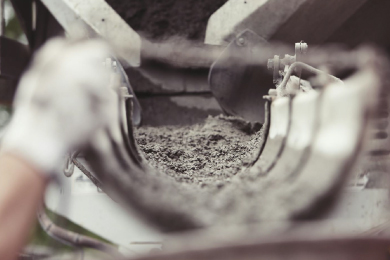Data Centres – they’re the engine within the Internet, and we all depend on them – personally and professionally. But just like any other engine, though they lighten our load, we shouldn’t kid ourselves that there isn’t an environmental price to pay for it.
Globally, it is estimated that datacentres consume approximately 200 TWh of electricity every year (that’s just less than two thirds of the UK’s total electricity consumption at the time of measuring!) and this figure is rising with more widespread and more intensive internet use.
What, then, can data centres do to be more sustainable, at a time when, like all industries, they are coming under increasing scrutiny as part of net zero aspirations?
As specialists in sustainable building design, we’ve helped many data centre clients to address this challenge (and reduce their costs) by enabling them to consume less energy –here’s how we can do it for you, too.
Cooling: tackling an energy hotspot
A bit of technical background first: the energy efficiency of a data centre is measured by its Power Utilisation Effectiveness (PUE) number, which is the ratio of energy used by a data centre to the energy used by the IT load it is handling. The higher the first figure in relation to the second, the more energy-inefficient (or less energy-efficient) the data centre is.
Cooling is often the cause of a poor PUE score, and as all centres require it, it is hardly surprising that energy inefficiency in data centres is common.
Enter our recent three-year, 30 megawatt, energy-saving project for Vodafone. We reviewed their older data centres, and were able to save energy and reduce costs by designing and installing multiple sustainable technology solutions.
These included free cooling (using low external air temperatures to assist in chilling water), better controls (with variable-speed fans and cooling pumps that self-regulate in line with demand),new plant (including pressure-sensing the floor void to reduce air volumes and look at running on higher indoor temperatures), and fresh air solutions (using either direct fresh air for cooling or a free air chiller set with higher chilled water temperatures to increase the hours of free cooling).
Our work on this project resulted in us winning a National Building Award for Green Sustainability, and we are currently working on a similar project with CBRE, the global leader in commercial real estate services and investment.
Consolidation and control: where sustainability starts
However, as with so much else in our sustainable building design projects, effective outcomes are often about changing what’s already there and how it is used. This is critical, because simply installing energy-efficient technology on top of wasteful processes will rarely deliver positive change.
One issue we often come up against, for example, is that many data centres are not running at full capacity – they have modular infrastructure to spare, to accommodate growth – yet that unused plant is often in a space that is cooled, heated, and lit along with the rest of the centre.
Clearly, this isn’t sustainable, so one of the things we help data centre companies to do is to consolidate their plant to enable energy-consuming processes to be focused only where they’re needed, but remain scalable so that they can be expanded as and when spare capacity becomes necessary.
Consolidation and improved control necessarily go hand in hand – you can’t rein in consumption if you can’t control all the places it’s happening in – and so in these scenarios we also upgrade the control technologies (as in the Vodafone example above) to enable energy-consuming processes to be more selectively and precisely controlled.
This helps ensure, for example, that optimal temperatures are maintained at all times, avoiding wasteful and costly heating and cooling overuse.
Making sustainable behaviours easier
Of course, human behaviour is as valuable an ally in the drive to sustainability as any technology, and as a business that has, in its own headquarters, made extensive changes to enable its staff to behave more sustainably, we help our data centre clients do the same, by making it easy to simply switch plant and kit off when it isn’t needed.
This isn’t just about (again) having better controls – it’s about making it easy for humans to do what’s best for their business, best for their Environmental, Social, and Governance (ESG) performance, and best for the planet.
The easier it is, the more likely it is to get done, and the quicker and greater its collective effect – in tandem with the other sustainability improvements we’ve mentioned above - on the centre’s PUE.
The engines of the Internet need to run leaner. The tune-up starts with us.
Get in touch today to find out more about how we can help greenfield, brownfield, and renovation datacentre projects to reduce energy consumption, lower running costs, and increase sustainability.





.png)




